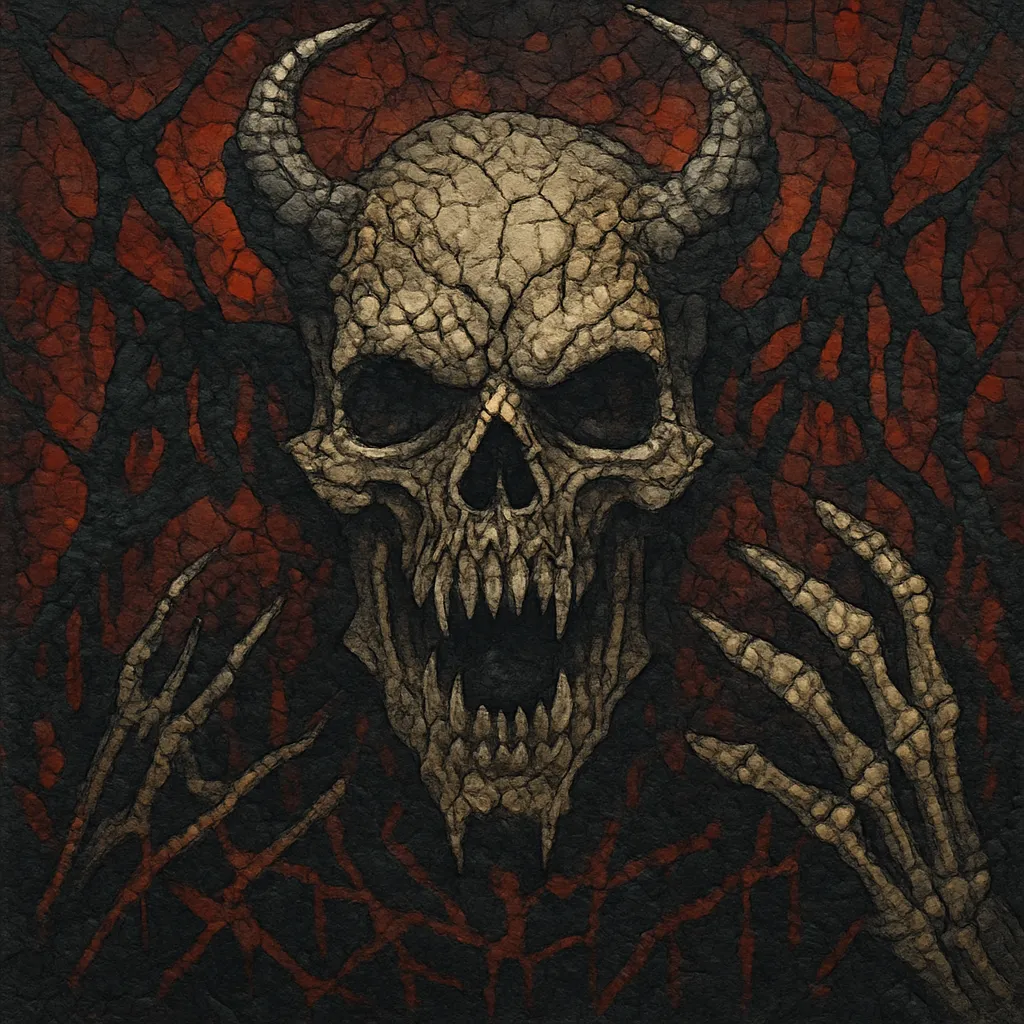
Brutal death metal is an especially extreme branch of death metal that emphasizes overwhelming intensity, dense riffing, and relentlessly aggressive rhythm.
Hallmarks include very low-tuned, percussive guitars; rapid-fire tremolo picking; slam-oriented breakdowns; constant blast beats and gravity blasts; and ultra-guttural vocals that range from cavernous growls to “pig squeals.” Lyrical themes are typically visceral and graphic, drawing on horror and gore. Production often favors a tight, punchy drum sound (frequently with triggered kicks), thick multi-tracked guitars, and a bass tone that locks to the drums for maximal impact.
Compared to traditional death metal, brutal death metal prioritizes extremity, physicality, and riff density over melody, and often integrates grindcore’s speed and brevity with hardcore-influenced breakdown weight.
Brutal death metal coalesced in the early 1990s in the United States, particularly around the New York and Florida scenes. Building on the speed and extremity of grindcore and the weight of death metal, bands like Suffocation pushed the style toward denser riffing, guttural vocals, and heavier breakdowns (later dubbed “slams”). Suffocation’s Effigy of the Forgotten (1991) and Internal Bleeding’s early demos/works helped define the NYDM blueprint.
The style spread rapidly through both U.S. and international undergrounds. Cannibal Corpse’s increasingly brutal approach (e.g., The Bleeding, 1994) popularized ultra-guttural vocals and graphic themes; Cryptopsy (Canada) escalated technical intensity with Blasphemy Made Flesh (1994) and None So Vile (1996). On the U.S. West Coast, Deeds of Flesh (Trading Pieces, 1996; Inbreeding the Anthropophagi, 1998) refined speed-focused riff mazes. Dying Fetus fused grindcore’s urgency with breakdown heft, while Devourment (Molesting the Decapitated, 1999) codified the ultra-heavy slam variant.
In the 2000s, brutal death metal became a global phenomenon. Scenes flourished in Europe (e.g., Germany’s Defeated Sanity), Russia (Abominable Putridity), Southeast Asia (notably Indonesia’s prolific BDM community), and Latin America. Production grew tighter and more percussive (clicky, triggered kicks; surgical guitar tracking), while songwriting bifurcated between hyper-technical brutality and slam-centric groove.
The style remains vibrant through specialized labels, festivals, and online communities. Modern bands toggle among three poles—speed/technicality, groove/slam, and hybrid brutality—while maintaining the genre’s core: down-tuned, riff-dense, relentlessly physical extreme metal.

